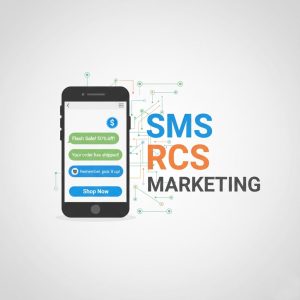How to Create a Mobile Marketing Strategy That Actually Works

Mobile marketing has become the cornerstone of successful digital campaigns. With over 6.8 billion smartphone users worldwide, your customers are spending more time on their mobile devices than ever before. Yet many businesses still treat mobile marketing as an afterthought rather than a strategic priority.
Creating an effective mobile marketing strategy requires more than simply optimizing your website for smaller screens. It demands a comprehensive understanding of mobile user behavior, the right mix of channels, and tactics specifically designed for the mobile experience. This guide will walk you through the essential steps to build a mobile marketing strategy that drives real results for your business.
Whether you’re starting from scratch or looking to improve your existing mobile efforts, you’ll discover actionable strategies that align with how people actually use their mobile devices throughout the day.
Understanding Your Mobile Audience

Before diving into tactics and channels, you need to understand who your mobile users are and how they behave differently from desktop users. Mobile users typically have shorter attention spans, different intent patterns, and unique conversion paths.
Start by analyzing your current mobile traffic through Google Analytics. Look at metrics like session duration, bounce rate, and conversion rates specifically for mobile users. Pay attention to peak usage times, popular pages, and the devices your audience uses most frequently.
Consider conducting surveys or user interviews to understand the context in which people use your mobile content. Are they browsing during commutes, shopping while watching TV, or researching products in-store? This context will shape every aspect of your mobile strategy. This context will shape every aspect of your mobile strategy. For insights on upcoming trends, explore this Mobile Marketing Trends guide.
Setting Clear Mobile Marketing Goals
Your mobile marketing goals should align with your overall business objectives while accounting for mobile-specific behaviors and opportunities. Common mobile marketing goals include increasing app downloads, improving mobile conversion rates, driving foot traffic to physical locations, and enhancing customer engagement.
Make your goals specific and measurable. Instead of “increase mobile traffic,” aim for “increase mobile organic traffic by 25% over the next six months.” This specificity will help you choose the right tactics and measure success accurately.
Consider the full customer journey on mobile devices. Users might discover your brand on social media, research on your mobile website, and complete their purchase through your app. Your goals should reflect this multi-touchpoint reality.
Optimizing Your Mobile Website Experience
Your mobile website serves as the foundation of your mobile marketing strategy. Mobile optimization goes beyond responsive design to include page speed, navigation, and conversion optimization specifically for mobile users.
Page speed is critical for mobile success. Google research shows that 53% of mobile users abandon sites that take longer than three seconds to load. Use tools like Google PageSpeed Insights to identify and fix speed issues. Compress images, minimize HTTP requests, and leverage browser caching to improve load times.
Design your mobile site with thumb-friendly navigation. Place important buttons within easy reach of users’ thumbs, typically in the center and bottom portions of the screen. Simplify your navigation menu and reduce the number of steps required to complete key actions.
Mobile forms deserve special attention. Minimize the number of fields, use appropriate input types for different data, and implement autofill capabilities where possible. Consider social login options to reduce friction during the signup process.
Leveraging Mobile-Specific Channels
Mobile marketing opens up unique channels that don’t exist on desktop. SMS marketing, push notifications, and location-based marketing can create highly personalized experiences when used strategically.
SMS marketing remains one of the highest-converting mobile channels, with open rates exceeding 90%. Use SMS for time-sensitive offers, appointment reminders, and urgent updates. Keep messages concise and always provide clear opt-out instructions.
Push notifications can re-engage app users and drive immediate action. However, they require careful timing and personalization to avoid becoming annoying. Segment your audience and test different messaging approaches to find what resonates best.
Location-based marketing allows you to reach customers when they’re near your physical locations or in relevant geographic areas. Use geofencing to trigger targeted messages or ads when users enter specific areas.
Creating Mobile-Optimized Content
Mobile content consumption patterns differ significantly from desktop. Users prefer scannable content, visual elements, and bite-sized information that’s easy to consume on small screens.
Structure your content with mobile readers in mind. Use short paragraphs, bullet points, and plenty of white space. Break up long articles with subheadings that allow users to quickly find the information they need.
Visual content performs particularly well on mobile devices. Incorporate high-quality images, videos, and infographics that are optimized for mobile viewing. Ensure videos load quickly and include captions for users who watch without sound.
Consider creating mobile-specific content formats like Stories, short-form videos, and interactive content that takes advantage of mobile device capabilities like touch, swipe, and device orientation.
Implementing Mobile SEO Best Practices
Mobile SEO has become table stakes since Google’s mobile-first indexing rollout. Your mobile SEO strategy should focus on technical optimization, local search, and voice search optimization.
Ensure your site uses responsive design or has a mobile-specific version that provides equivalent content and functionality. Avoid common mobile SEO mistakes like blocking CSS or JavaScript files that are necessary for rendering your mobile pages.
Local SEO is particularly important for mobile users, as many mobile searches have local intent. Optimize your Google My Business listing, encourage customer reviews, and ensure your NAP (Name, Address, Phone) information is consistent across all platforms.
Voice search optimization is increasingly important as more users rely on voice assistants. Target conversational, long-tail keywords and create content that answers specific questions your audience might ask.
Measuring and Optimizing Your Mobile Strategy
Successful mobile marketing requires continuous measurement and optimization. Set up proper tracking to monitor your mobile-specific metrics and use this data to refine your approach.
Key mobile marketing metrics include mobile traffic percentage, mobile conversion rates, app download rates, push notification engagement rates, and mobile page load speeds. Track these metrics separately from your overall digital marketing metrics to identify mobile-specific trends and opportunities.
Use A/B testing to optimize mobile-specific elements like button placement, form length, and messaging. Mobile users may respond differently to variations that perform well on desktop, so test everything independently.
Regular mobile usability testing can reveal issues that analytics might miss. Watch real users interact with your mobile site or app to identify friction points and optimization opportunities.
Building Your Mobile Marketing Action Plan
Creating a successful mobile marketing strategy requires careful planning and consistent execution. Start by auditing your current mobile presence to identify gaps and opportunities. Prioritize improvements based on their potential impact and resource requirements.
Develop a mobile content calendar that accounts for mobile user behavior patterns. Plan campaigns that leverage mobile-specific features and timing. Remember that mobile users often engage with content during micro-moments throughout the day.
Consider your resource requirements for maintaining an effective mobile marketing strategy. This might include investing in mobile development, content creation tools, or mobile marketing platforms that can automate and scale your efforts.
Stay updated on mobile marketing trends and platform changes. The mobile landscape evolves rapidly, and strategies that work today may need adjustment as user behavior and technology continue to change.
Your mobile marketing strategy should evolve with your business and your audience. Regular reviews and updates will ensure your mobile marketing continues to drive results and support your overall business objectives.








